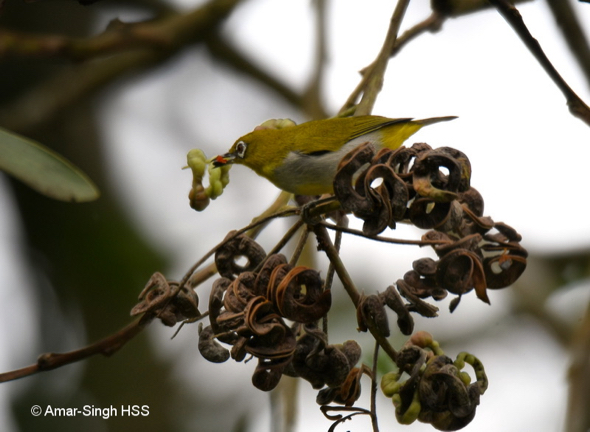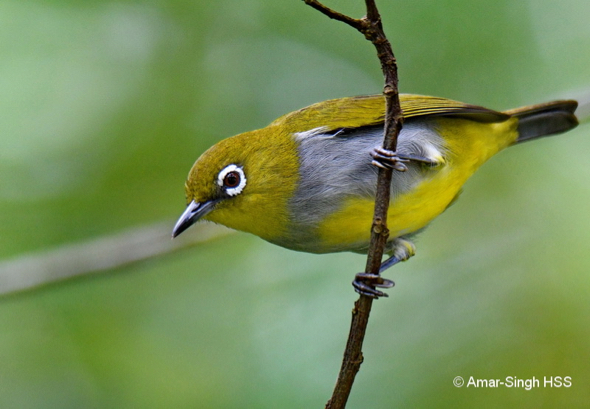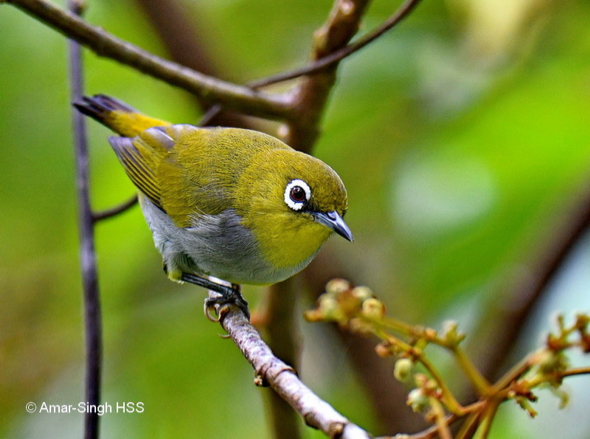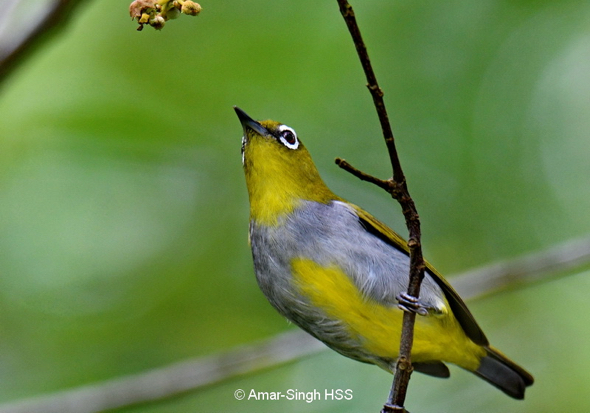“A flock of 12-15 Everett’s White-eyes (Zosterops everetti tahanensis), together with many other birds including flycatchers, bulbuls and sunbirds, feed as a mixed foraging party at the same location most days for insects and fruit.
“I have seen a number of them feed on the black seeds and orange stalks (arils) of the Acacia mangium trees. Acacia mangium is a tree native to north-eastern Australia (Queensland) and western Papua New Guinea. It has been extensively planted in Malaysia for commercial reasons (furniture manufacturing and pulp and paper). It is a legume, able to fix nitrogen in the soil, grow in low fertility soils and is fast growing. Hence it is often planted near damaged forest areas for site rehabilitation. For germination the seeds are pre-treated with some form of scarification e.g. hot water treatment. It is said that ‘the germinating seeds can be cooked and eaten as a vegetable’ LINK.
“The seeds are shiny black and range from 3-5 mm long and 2-3 mm wide. All the birds I have seen feeding on them take both the arils and seeds. I wonder if they aid in the spread of this tree species by ‘depositing’ seeds at different sites?
“Birds seen feeding on the arils and seeds of the Acacia mangium include:
Olive-winged Bulbuls Pycnonotus plumosus plumosus
Red-eyed Bulbul Pycnonotus brunneus
Yellow Vented Bulbul Pycnonotus goiavier analis
Everett’s White-eye Zosterops everetti tahanensis
Mugimaki Flycatcher Ficedula mugimaki
Ruby-cheeked Sunbird Chalcoparia singalensis interposita
Plain Sunbird Anthreptes simplex
Brown-throated Sunbird Anthreptes malacensis malacensis.”
Dato’ Dr Amar-Singh HSS
Ipoh, Perak, Malaysia
3rd December 2018
Location: Kledang-Sayong Forest Reserve, Ipoh, Perak, Malaysia
Habitat: Fringe of primary jungle












